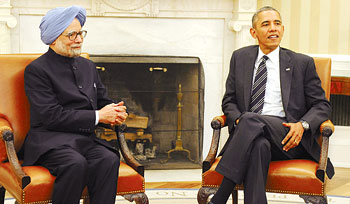INDIAN ARMED FORCES CHIEFS ON OUR RELENTLESS AND FOCUSED PUBLISHING EFFORTS

The insightful articles, inspiring narrations and analytical perspectives presented by the Editorial Team, establish an alluring connect with the reader. My compliments and best wishes to SP Guide Publications.

"Over the past 60 years, the growth of SP Guide Publications has mirrored the rising stature of Indian Navy. Its well-researched and informative magazines on Defence and Aerospace sector have served to shape an educated opinion of our military personnel, policy makers and the public alike. I wish SP's Publication team continued success, fair winds and following seas in all future endeavour!"

Since, its inception in 1964, SP Guide Publications has consistently demonstrated commitment to high-quality journalism in the aerospace and defence sectors, earning a well-deserved reputation as Asia's largest media house in this domain. I wish SP Guide Publications continued success in its pursuit of excellence.
- Appointments Committee of Cabinet approves one-month extension in service of Chief of the Army Staff
- Admiral Dinesh K. Tripathi assumes Command of the Indian Navy as 26th Chief of the Naval Staff
- Prime Minister witnesses 'Bharat Shakti' – a Tri-Services Firing and Manoeuvre Exercise in Pokhran, Rajasthan
- Interim Defence Budget 2024-25 — An Analysis
- Union Defence budget 2024
- Prime Minister Modi Commemorates Indian Navy Day in a Grand Ceremony
Media Call: Prime Minister Manmohan Singh's White House visit

Prime Minister Dr Manmohan Singh met President Barack Obama on September 27 at the White House. Prior to Dr Singh’s visit to the White House, the Carnegie Endowment for International Peace organised a media call in which eminent scholars such as Ashley J. Tellis and Milan Vaishnav discussed topics likely to come up in the bilateral meeting between the two leaders, including the landmark India-US civil nuclear deal, enhancing defence cooperation, and strengthening trade, investment and economic collaboration.
The visit being an important one, the Editor-in-Chief of SP’s M.A.I. Jayant Baranwal, participated in the media call to elicit views of the scholars on Indo-US relations, particularly in relation to defence.
Jayant Baranwal (SP’s): What are the steps the United States is taking towards creating concrete synergies between the world’s two largest democracies?
Ashley J. Tellis: The short answer to that is to look at the character of the engagement that has been put in place now over the last 10-odd years. There is a huge agenda that the two countries are working on in the context of the strategic dialogue.
The strategic dialogue is this umbrella that covers strategic cooperation, defence cooperation, cooperation on energy, cooperation on science and technology, cooperation in education, cooperation on climate. I mean, the list is literally endless. And both sides have been working first on reconciling policies. Secondly, there are concrete initiatives that both sides are pursuing under each of these issue areas. And so when one talks of synergies between the two countries, I think the one thing that has certainly changed when one thinks of the relationship prior to 1998 is that today both countries are pursuing a cooperation agenda that is actually really far too detailed to kind of list.
And, you know, I would just recommend you go to any of the fact sheets that have been published in the last several years and you’ll get an extraordinary agenda about the cooperation.
SP’s: How does the US see the nuclear capability of India now? A quick review.
Tellis: When you say ‘nuclear capability’, are you talking of civilian nuclear energy or are you talking of nuclear weapons?
SP’s: Holistically.
Tellis: Well, on the civil nuclear energy side, I think the US recognises that India has placed a priority on increasing the share of nuclear energy as part of its total energy mix. And the US has reported that and is looking forward really to concluding, you know, the promise of the civil nuclear agreement to make that happen.
On the nuclear weapons issue, the US has been silent because as a matter of rule we don’t comment on the nuclear weapons capabilities of other countries. But as you know, the US has reconciled itself to the fact that India has nuclear weapons, and today this administration in particular is far more focused on nuclear security rather than on the weaponry itself.
SP’s: In terms of the defence market, what kind of an investment can be expected by US companies in India in the next 10 years?
Tellis: It all depends on how India treats US defence companies in terms of its own regulations and its investment levels. As long as foreign direct investment (FDI) in defence is capped at 26 per cent, I don’t think US companies will take the initiative to make major investments in India. But if the FDI caps are liberalised upwards, then I think you will begin to see a process.
Now, there is already some investment occurring because of the offsets requirements, but if you want to see real, major investments by US companies in India, then I think you have to have an increase in FDI levels. You cannot have FDI levels capped at 26 per cent and expect that US companies will make big investments in India.





